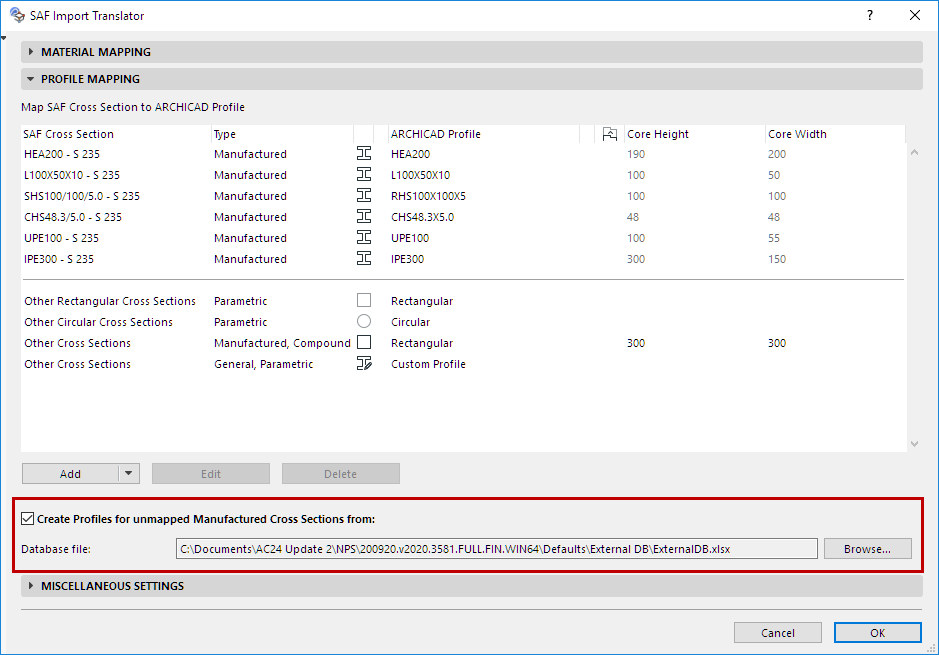
Create Profiles for Unmapped Manufactured Cross Sections (Import SAF to ARCHICAD)
Incoming 1D SAF Profiles are mapped based on the definitions in the Profile Mapping panel.
However, for manufactured SAF profiles that are NOT mapped by name in the Profile Mapping list: you can activate automatic mapping based on a default database, which contains more than 6000 SAF Cross Sections mapped to ARCHICAD Complex Profiles.
Activate this checkbox in the Profile Mapping panel of the SAF Import Translator.

If the checkbox is on, then the import process will refer to a predefined list (an Excel file called “ExternalDB”) to map all incoming, manufactured Cross Sections which are NOT mapped by name in the Profile Mapping list above. This can save you a lot of time and effort compared to mapping by hand.
For each incoming SAF Cross Section mapped this way, the corresponding Complex Profile attribute is automatically created in ARCHICAD, based on the Standard Steel Profile database.
See Use Standard Steel Column or Beam Profile.
Location and Editing of Database file (Manufactured SAF Cross Sections)
The “ExternalDB” Excel file is located in your Defaults folder, where you have installed ARCHICAD.
Also check the Downloads site for predefined database files you can use for this purpose. (See Download SAF Data Files Optimized for Structural Applications.)
It is possible to create your own database file, save it, and then browse your custom file to use. You must use an Excel file consisting of a single sheet, with the same two columns and column names as in the provided default file.
Important: You can copy and edit the default ExternalDB file provided in your ARCHICAD template, but do NOT rename or move it!
Priority of Mapping Rules for Manufactured Cross Sections
Mapping rules are applied in the following order:
1.Mapping by name, based on the list in the Profile Mapping panel
2.External database (provided that the “Create Profiles for Unmapped Manufactured Cross Sections” box is checked).
3. “Other Cross Sections - Manufactured” setting. This is the catch-all definition for all manufactured Cross Sections that have not been mapped in steps 1 and 2 above.